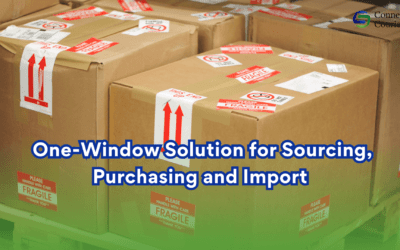Effective Cost-Cutting Measures to Reinvest in Growth

In any business, managing expenses is a crucial part of staying profitable and sustainable. While cost-cutting is sometimes seen as a reaction to financial trouble, smart, effective cost-cutting measures can serve a far more strategic purpose: freeing up resources to reinvest in growth. Done correctly, cutting costs isn’t about reducing quality or services; it’s about optimizing operations and ensuring every dollar works to its fullest potential. Let’s explore some practical ways businesses can cut costs while remaining growth-focused.
Start with an Operational Audit
Before diving into specific cost-cutting measures, it’s important to begin with an operational audit. This means taking a deep dive into every area of your business to evaluate where money is being spent, and more importantly, where it’s being wasted. Whether it’s bloated administrative processes, underutilized software subscriptions, or overstocked inventory, identifying inefficiencies is the first step to cutting costs in a meaningful way.
A detailed audit can provide insights into hidden expenses that may not have been previously obvious. Often, businesses discover unnecessary redundancies or outdated practices that can be streamlined or eliminated altogether. Once you have a clear picture of where your money is going, it becomes easier to implement effective cost-cutting measures that don’t disrupt key business functions.
Read our blog: Leveraging Customer Feedback to Drive Business Growth for more insights on how improving processes and listening to customers can also help streamline operations, leading to cost efficiencies.
Streamline Your Technology
Technology is often one of the largest expenses for businesses, but it’s also an area where costs can be efficiently managed. Review your company’s current tech stack and look for opportunities to consolidate or replace outdated systems with more efficient alternatives. For example, cloud-based solutions can often replace expensive on-premise servers, reducing both hardware costs and IT maintenance expenses. Additionally, consider whether you’re paying for software licenses that are no longer necessary or fully utilized.
Automation
Automation is another key area for cost savings. Automating routine tasks, such as payroll, data entry, or customer service inquiries, can significantly reduce labour costs and free up employees for more value-driven work. By investing in the right technology, you not only cut costs but also position your business for better scalability in the long term.
Reevaluate Supplier Relationships
Supplier relationships are another significant factor in overall business expenses. Take the time to reevaluate your supplier contracts and look for opportunities to renegotiate terms. By building stronger relationships with your suppliers and demonstrating loyalty, you may be able to secure better pricing, improved payment terms, or bulk order discounts.
Another effective cost-cutting measure is to diversify your suppliers. Relying on a single source can put you at a disadvantage if prices rise or supply chains are disrupted. By seeking out alternative suppliers or considering local vendors, you can drive more competitive pricing and mitigate risks, all while cutting unnecessary costs.
Optimize Your Workforce
Labour costs are often one of the largest line items in a business’s budget. However, reducing staff should not be the first move in cost-cutting. Instead, focus on optimizing your workforce for maximum productivity. This could involve cross-training employees so they can take on multiple roles or implementing flexible work arrangements to reduce overhead costs, such as office space or commuting expenses.
If your business relies heavily on part-time or temporary workers, consider whether outsourcing certain tasks might be a more cost-effective solution. Outsourcing can reduce administrative overhead and allow you to scale your workforce up or down based on demand, keeping labour costs in line with revenue fluctuations.
Reduce Office Expenses
With remote work becoming more common, reducing office-related expenses is another area where businesses can save. If a full office is no longer necessary, consider downsizing or moving to a shared workspace. By transitioning to a more flexible work environment, you can significantly cut costs associated with rent, utilities, office supplies, and maintenance.
For businesses that still require an office, taking a closer look at energy efficiency can also yield savings. Small changes such as using LED lighting, programmable thermostats, or adopting energy-efficient equipment can reduce utility bills over time. These measures may seem minor, but over months and years, they add up to considerable savings.
Reinvesting Savings into Growth
The ultimate goal of effective cost-cutting measures should be to free up resources that can be reinvested into growth. Use the money saved from trimming inefficiencies to fund strategic initiatives such as marketing, product development, or expanding into new markets. This allows your business to stay competitive, innovate, and continue scaling without being burdened by unnecessary costs.
By taking a balanced approach to cutting expenses—focusing on optimization rather than indiscriminate slashing—your business will not only survive but thrive in today’s competitive landscape. Effective cost-cutting is a proactive strategy that ensures your operations remain lean, and it creates room for reinvestment that drives future growth.
Conclusion: Smart Cost-Cutting for Long-Term Success
Cutting costs doesn’t mean sacrificing quality or stagnating growth. When done thoughtfully, cost-cutting measures can unlock new opportunities for reinvestment in areas that directly impact your business’s bottom line. From streamlining operations and optimizing technology to renegotiating supplier contracts and adopting flexible workforce solutions, there are many ways to reduce expenses without compromising your company’s future success.
For businesses involved in international trade, one strategic cost-cutting approach is optimizing import logistics. Managing shipping efficiently, especially when dealing with large volumes from major trading hubs like China, can greatly reduce expenses. Connect Courier’s reliable import services from China to Karachi offer a seamless solution for businesses seeking to improve their supply chain. With extensive experience in handling imports from China, they provide timely deliveries, competitive rates and ensure hassle-free customs clearance. Whether you are shipping small parcels or large containers, Connect Courier can help streamline your operations while reducing overall shipping costs.
By approaching cost-cutting with a strategic mindset, you’ll be better positioned to drive growth and achieve long-term sustainability. For businesses looking to optimize their shipping expenses, Connect Courier offers cost-effective logistics solutions that ensure timely deliveries without breaking the bank. Partnering with a reliable courier service can help you further reduce costs and reinvest savings back into your growth strategy.






